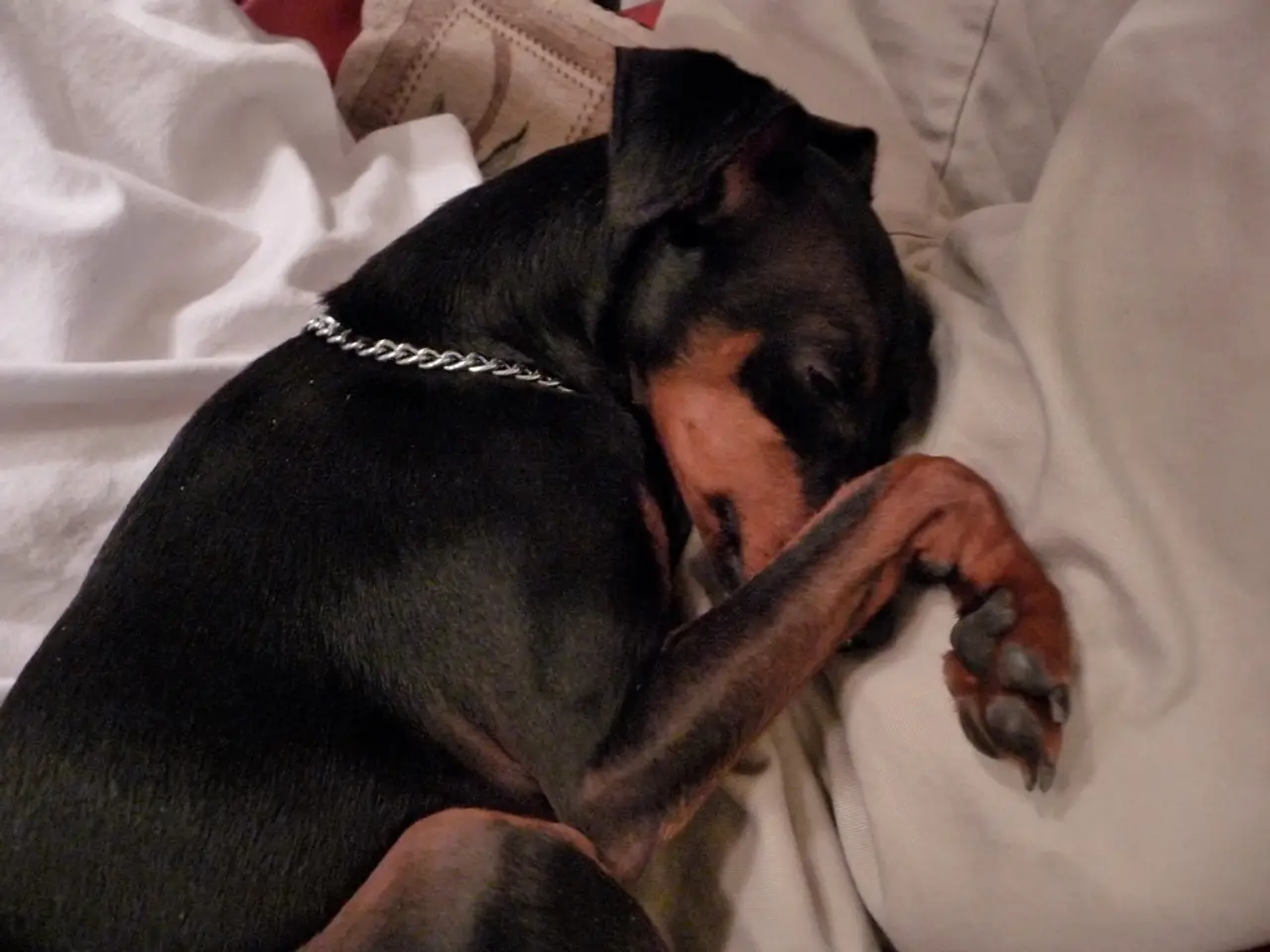Symptoms to Watch for in Canine Dementia
In the twilight years of a dog's life, a condition known as Canine Cognitive Dysfunction (CCD) or canine dementia becomes increasingly common. According to research, around one in three dogs older than 11 years exhibit signs of CCD [1]. The onset of this condition typically begins around age eight, but symptoms often become noticeable as dogs reach senior age, especially beyond 11 years [1].
Veterinarians employ the DISHAAL framework to identify signs of dementia in dogs. DISHAAL is an acronym that stands for Disorientation, Interaction changes, Sleep/wake cycle changes, House soiling, Activity changes, Anxiety, and Learning and memory decline. These behavioural changes help vets systematically assess whether a dog may be experiencing cognitive decline related to dementia [2].
Since CCD cannot be cured, veterinary management focuses on slowing disease progression and improving quality of life. This involves cognitive enrichment, dietary modifications, and other supportive care measures [1].
At home, simple adjustments can help create a comfortable environment for a dog with dementia. Keeping doors open or closing off certain areas can help prevent confusion. Ensuring easy, unobstructed access to their bed and a quiet space where they won't be disturbed while sleeping can help a dog with dementia get the rest they need. Creating a calm environment that enables a dog with dementia to rest as much as possible is essential for their wellbeing [3].
Specially formulated dog foods, such as Purina Pro Plan Neurocare, incorporate brain-supporting ingredients to help manage canine dementia. Supplements like Senilife, containing antioxidants designed to counteract oxidative processes in the brain, can be helpful in managing canine dementia [4]. Dog dementia medicine, such as selegiline, can help support cognitive function by increasing the level of neurotransmitters available in the brain [5].
Dogs with dementia may become more sensitive and reactive to sights and sounds, and develop a heightened fear of unfamiliar environments. Keeping a dog with dementia mentally active and engaged can help slow cognitive decline. This can be achieved through the use of puzzle toys or gentle training sessions [3].
Dogs with dementia may exhibit increased anxiety, becoming more clingy or needy, and glued to their pet parents. They often experience changes in learning and memory, such as struggling to learn new tasks and forgetting commands or routines they once knew well [6]. Making thoughtful adjustments at home, such as using calming pheromones, can have a big impact on a dog with dementia's everyday lifestyle and quality of life.
References:
[1] Landsberg, G. M., & Barr, S. R. (2014). Geriatrics and Gerontology for Small Animal Practice. Wiley-Blackwell.
[2] Wells, D. L., & Hale, L. W. (2013). Canine Cognitive Dysfunction Syndrome: Diagnosis and Treatment. Veterinary Clinics of North America: Small Animal Practice, 43(6), 1023-1036.
[3] Cope, J. (2019). Managing Canine Cognitive Dysfunction. Today's Veterinary Practice, 41(12), 26-31.
[4] McNicholas, T. J., & Peterson, M. E. (2016). Antioxidant supplementation in canine cognitive dysfunction syndrome. Journal of Veterinary Internal Medicine, 30(6), 1661-1671.
[5] Landsberg, G. M., & Barr, S. R. (2014). Selegiline for the treatment of canine cognitive dysfunction syndrome. Veterinary Clinics of North America: Small Animal Practice, 44(1), 111-126.
[6] Wells, D. L., & Hale, L. W. (2013). Behavioral changes associated with canine cognitive dysfunction syndrome. Veterinary Clinics of North America: Small Animal Practice, 43(6), 1007-1019.
- Incorporating brain-supporting ingredients into a dog's diet, such as those found in Purina Pro Plan Neurocare, and using supplements like Senilife, can assist in managing signs of dementia related to aging.
- Maintaining a balanced approach to health-and-wellness, fitness-and-exercise, mental-health, and nutrition-in the later years of a dog's life can help slow cognitive decline and improve their quality of life.
- As dogs with dementia become more sensitive to their surroundings, creating a calm, comforting environment with minimal disturbances can help reduce anxiety and ensure they get the restful sleep they need for overall health and well-being.




